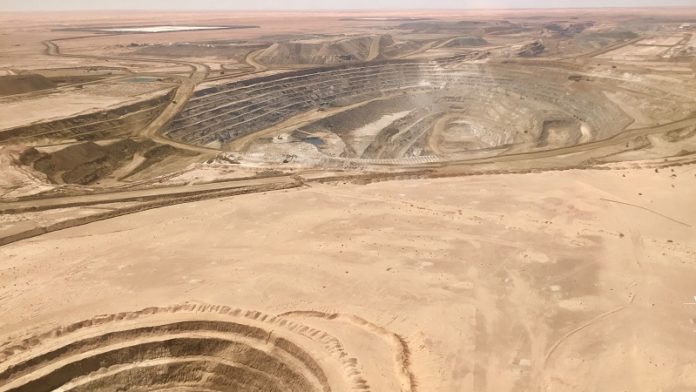
KINROSS Gold is to overhaul Tasiast mine’s royalty agreement with the Mauritania government that could see the Canadian firm double the royalty were the gold price to average the current spot price of $1,717/oz.
The Canadian firm said in an announcement today that it would add to the existing 3% royalty payable from Tasiast with a sliding scale structure linked to the gold price: at spot, the royalty would be 6% increasing to 6.5% if the gold price averaged over $1,800/oz. The most the royalty would increase is 1% (to a total of 4%) in the event the gold price fell below $1,000/oz.
The move was in recognition of the fact Mauritania had in 2018 updated its mining code and that similar steps had been taken by Mauritania’s African neighbours. The current royalty scheme between Kinross and the Mauritanian government was per a convention drafted in 2006.
In addition, Kinross agreed to hand a 15% free-carried stake in an expansion project planned at Tasiast – known as Tasist Sud – to the government with an option for a further 10% paid stake in Tasiast Sud on completion of its feasibility study.
In return for these concessions the Mauritania government agreed to sign a 30-year exploitation licence for Tasiast Sud, thus converting the previously held exploration licence. Mauritania delivered a shock to Kinross in 2018 when it declined to sign the licence conversion. The government said at the time it was seeking improved participation; this came at a time when similar moves were afoot elsewhere in Africa’s mining sector.
Last year, Barrick agreed a $100m payment to the Tanzanian government in settlement of a tax dispute and formed a joint venture with the Tanzanians that shares the economic proceeds of mines formerly held by Barrick’s 64%-owned subsidiary, Acacia Mining, on a 50:50 basis.
J Paul Rollinson, CEO of Kinross, acknowledged today’s agreement saying he was pleased with “… further development of a positive foreign investment climate in Mauritania”.
The mood at Tasiast has been volatile of late. In May, the government stepped in to end a 17-day strike called by staff. The strike came several months after Kinross had won sign-off on a $300m loan package in which the World Bank’s International Finance Corporation (IFC), among other lenders, participated.
The loan was for the $150m second phase expansion of Tasiast which takes production of the mine to an average 563,000 oz annually between 2022 and 2028. This is discrete from Tasiast Sud project which is located about 10km from the current operational footprint.
Tasiast is one of Africa’s notable standalone mining operations: in 2019 the mine produced 391,097 oz of gold, some 140,000 oz more than in 2018. For the first quarter, production totalled 103,837 oz which compares to first quarter production last year of 101,358 oz.
There are other elements to the broad-ranging agreement with the Mauritanian government. For instance, Kinross will pay a total of $25m to the government to settle disputes related to its 2018 application to convert the licence for Tasiast Sud from exploration to exploitation ($15m) and a further $10m will be paid to government representing unresolved matters related to fuel use and tax exemptions.
In return for an exploitation licence, Kinross will also receive the reinstatement of a tax exemption on fuel duties and the repayment of $40m in outstanding VAT refunds that will be paid in tranches up to 2025.
“This agreement is a result of positive efforts between the Government of Mauritania and Kinross to amicably resolve our discussions,” said Mohamed Abdel Vetah, Mauritania’s petroleum, mines and energy minister in a statement.











